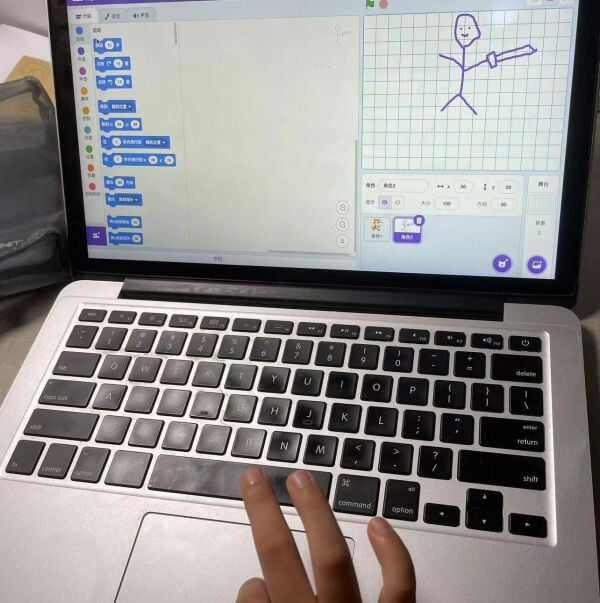Recently, I gifted my eldest son a MacBook equipped with an Intel CPU, a remarkable machine that predates him. This MacBook holds sentimental value for me; it’s the heroic device on which I crafted numerous lines of code. The software developed on this machine is still operational somewhere to this day.
The moment I handed the MacBook to my son, I briefly showed him the basics: how to shut down, boot up, and navigate using the touchpad with single and double clicks. My only software introduction to him was Scratch. I explained the simplicity of opening it in a browser, logging in, and unleashing his creativity to build his own digital world.
Observing him explore Scratch was a joy. He quickly experimented with its various functions, soon creating a cartoonish image. His excitement was palpable as he delved deeper into the platform, exemplifying a natural inclination towards technology.
In the days following, post-homework, he eagerly immersed himself in Scratch, frequently approaching me with an increasing number of questions about controlling his creations. He aspired to make a cartoon video. I guided him gradually, nurturing his curiosity and skills. Perhaps, in a few years, he’ll realize this was his introduction to programming, and the ‘hello world’ moment with the simplest command marked the beginning of his journey.

Every programming language starts with a “Hello World”, symbolizing readiness to build software. Learning a new programming language might be swift, involving understanding how to declare functions, variables, and control logic. However, developing software is a more time-consuming and intricate endeavor.
As a novice aspiring to enter the software industry, one might find that learning programming is straightforward. Nowadays, the necessity to install a programming environment is even bypassed, thanks to browser-based platforms like LeetCode. However, building and shipping software is a real challenge. Software engineering, unlike simple programming exercises often focused on mathematical problems, involves a blend of engineering experience and solving complex, multifaceted puzzles. Software is made for human use; its value is realized only when it’s actively used. To prevent your efforts from becoming futile, it’s crucial to bridge the gap between coding and software development.
Here are key steps to consider:
1.Identify Real Requirements
People without an IT background often struggle to articulate their requirements clearly, swinging between oversimplification and complexity. Your goal is to find a middle ground, starting with the end in mind - how users want to interact and the data they require. Prototyping and aligning with the team are critical steps in this process.
2.Pragmatic Decision Making
The software development journey is filled with choices, from selecting frameworks to design patterns and architecture. While the industry offers numerous best practices, remember that their applicability depends on your specific context. Choose pragmatically, focusing on shipping the software and drawing from others’ experiences when relevant.
3.Team Alignment
In medium to large-scale projects, harmonizing with the team’s rhythm - designers, product managers, and fellow developers - is vital. Adhering to code standards and fostering a shared understanding is key to efficient collaboration.
4.Emphasis on Testing
Testing might be tedious, but it’s essential. Quality assurance is predominantly the developer’s responsibility, encompassing unit tests, stress testing, integration testing. Accept that no code is perfect and no software is bug-free; testing is your tool for familiarization and efficient debugging.
5.Documentation’s Primacy
In long-lifecycle software, like banking or metro operation systems, documentation is invaluable. It aids in maintaining and upgrading software amid industry advancements. While CMMI prioritizes comprehensive documentation, the agile methodology advocates for ‘just enough’ documentation, balancing clarity and maintenance ease.
In conclusion, software engineering != coding. While coding is a fundamental skill, top engineers view it as just one facet of their role. Successful software delivery relies on collaboration and understanding customer needs. To excel in software engineering, embrace the multifaceted nature of the job.
As AI continues to advance in coding capabilities, the human touch remains crucial in understanding the real world and learning from experience. This is where AI falls short, offering a growth opportunity for human software engineers. So, keep pushing forward on your path.